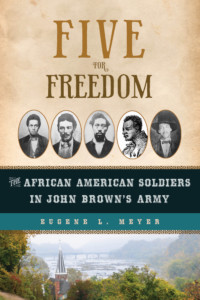Is a picture still worth 1,000 words? Newspapers say no.
They say a picture is worth a thousand words. Or at least they used to say that. Now, however, many publishers seem to think that – though they are not expensive – they are worth bupkis.
The vanishing political cartoon and cartoonists were the subject of a recent Washington Post Style section story “McClatchy chain lays off 3 esteemed cartoonists.” Not just esteemed but Pulitzer Prize winners, all three: Jack Ohman of the Sacremento Bee, Joel Pett of the Lexington Herald-Leader and Kevin Siers of the Charlotte Observer. Ohman was “stunningly blindsided,” the report quoted him as saying when told he was fired, the only Bee staff member being laid off.
“It is not the readers but the industry gatekeepers who have given up on political cartoons, for a variety of reasons,” Pett said, according to the Post story. “They don’t see how [political cartoons] make any money and they alienate people, and they can be a pain in the neck. So why bother, just because they are historically powerful and popular, and a longtime mainstay of the Fourth Estate? The democracy is doing great, right?”
Oddly, the Post on its website ran the McClatchey firings under the subhead “Comics,” as if there were anything comical about newspaper management abandoning political cartoons. The Post itself, where political cartoonist Herb Block was a cherished decades-long institution, followed by former Washington Star cartoonist Tom Toles, has also come in for criticism here.
The most direct criticism of the Post’s new position on political cartoons appeared in the Press Watch blog written by longtime journalist and media critic Dan Froomkin. “Just when they’re needed the most, the Washington Post is demoting political cartoons,” his blog headline says. He goes on to skewer the Post editorial page editor chosen by owner Jeff Bezos for opting for a rotating cast of mostly forgettable cartoonists over a single must-see replacement.
One notable pre-Bezos exception is freelancer Ann Telnaes, a 2001-Pultizer Prize winner, whose editorial cartoons in the Post are uniquely unforgettable.
“Reporters get tangled up in the skein of lies and deceptions and theatrics that make up modern politics; cartoonists cut right to the heart of the matter,” Froomkin writes. “In a political climate that is profoundly depressing to anyone paying attention, the cartoonists bring light and heat and joy and tears, which I’m pretty sure is the closest thing we have to a cure.”
Richard Prince, my colleague, friend, and Journal-isms creator and editor, linked to Froomkin’s blog on our [Post] partums list-serv and asked for thoughts. I had a few. The Post had recently killed the Saturday op-ed political cartoon poster board I’d enjoyed, and this day’s editorial page “cartoon” especially rankled. It showed an old car with a Biden license plate driven by an elderly person with an aghast Democratic donkey in the passenger seat, and the date 2024. It was an ugly ageist swipe at the president (never mind Trump is 77). I, too, was aghast.
Another day’s editorial page cartoon displayed a map of the country with numbered signs along the borders and tiny oblong things scattered throughout. There was no caption. I found it incomprehensible. A colleague suggested these were gun shells and the numbers were gun deaths. But a reader shouldn’t have to work so hard to get it. Pre-Bezos, “If you don’t get it, you don’t get it,” was the newspaper’s marketing slogan, rather patronizing, I thought. Now, it’s “Democracy Dies in Darkness.” We are indeed in a very dark place, with the firing of the three Pulitzer Prize winners abruptly dismissed and the new stable of Post political cartoonists failing to shed much light. Is one picture still worth 1,000 words? I guess the answer is it depends.
Now hear this!
“He had the touch and the charm, the dexterity with words and the drive. He understood people’s fears and their need to blame others for their failures. He discovered that if he said something often enough, no matter how untrue, people would believe it. Small lies were for the timid. The key to telling a big lie was to to do it with conviction. ”
Sound familiar? Of this moment? No, it was the 1920s. The quote is from Timothy Egan’s A Fever in the Heartland. The “He” was D.C. Stephenson, Grand Dragon of KKK in Indiana and a “charismatic charlatan” who “set in motion the Klan’s takeover of great swaths of America.”
Now for some good news:

And finally…
ICYMI, my review of The Wounded World: W.E.B. Du Bois and The First World War recently appeared in the online Washington Independent Review of Books. Click here. Also, I’m pleased to share another review of a book (The Burning Land) by my good friend and colleague David O. Stewart. Click here. This is the second volume in his fictional three-book Overstreet Saga, a historical series based on his own family’s history from the 18th century up until World War II.
Of course, there is also my oeuvre, which includes Five for Freedom: The African American Soldiers in John Brown’s Army, which continues to resonate five years after publication, and the more recently published Hidden Maryland: In Search of America in Miniature. Just click on the titles to order your copy. Or copies!


Thanks Gene I love reading your blog, Still full of fire!!!! I agree with everything but we are in a period of enormous and increasing censorship but we have to write even more!!!!
Gene;
Good post, and Ill read the article about the stolen loot.
You didn’t like poking fun at Biden’s age? That’s what happens when you become a Geezer. The toon should have shown both Biden and Trump with Hunter smoking crack in the rumble seat of a Model T and captioned “Cranky Old Men.”
Wishing there was an option on your blog to add an image as I have lots of old political cartoons, some even that an old Postie would understand, that I would share.
Visit The Chesapeake Today to see old toons about Governor Parris Glendening bedding his mistress and Deputy Chief of Staff while promoting her over other female staffers for three years, with the timid Post failing to inform its readers. Glendening’s press secretary even bragged to me that the Post and the Sun weren’t covering the story; why did I think it was newsworthy?
Too bad the cartoonists were dumped, but readers are dumping their former employers,
so there is that.
The Post is so bad now that I won’t even subscribe at $29 for a whole year.
Ken